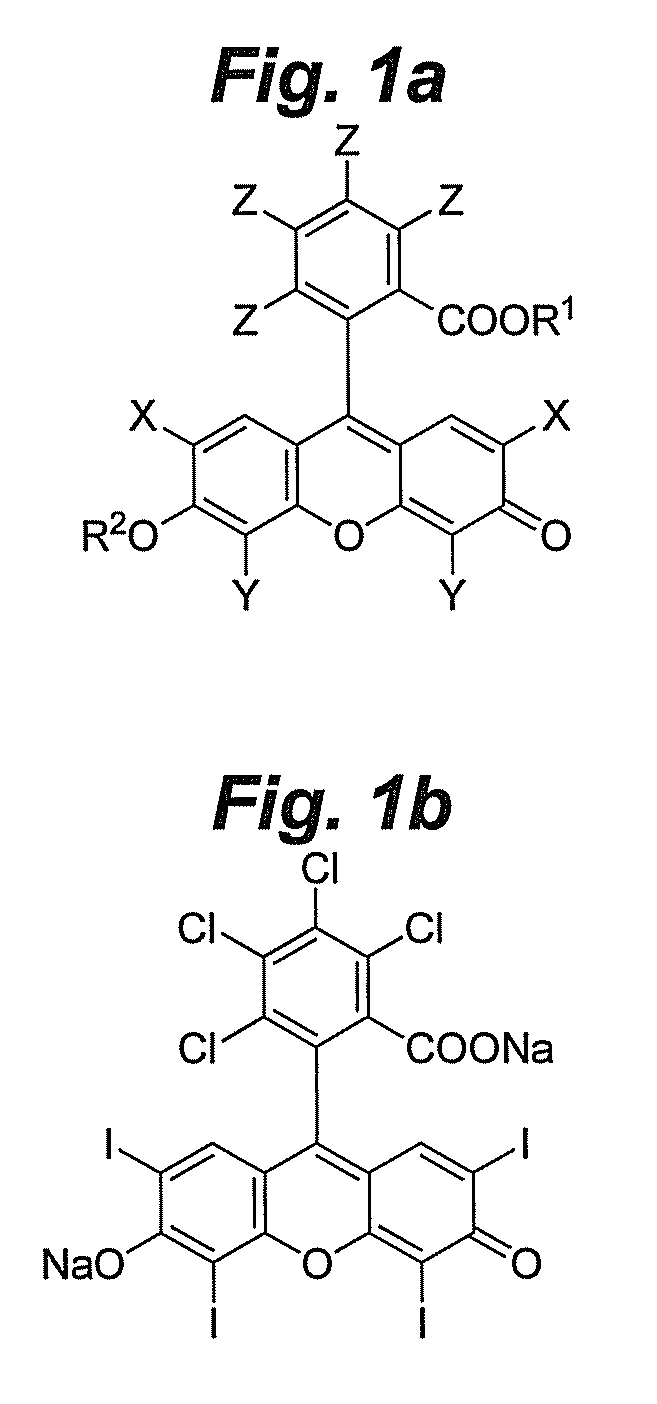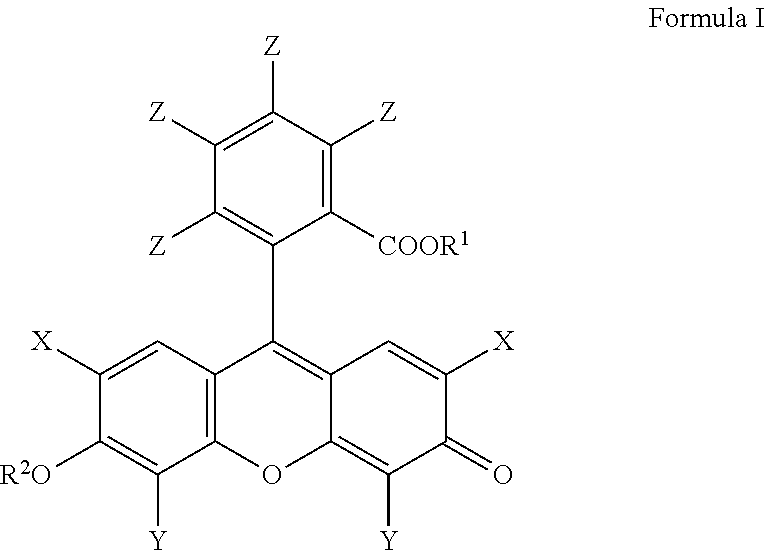Topical medicaments and methods for photodynamic treatment of disease
a technology of photodynamic treatment and medicaments, applied in the direction of biocide, drug composition, therapy, etc., can solve the problems of insufficient specificity of current agents, low target of such agents on diseased tissue, and minimal specificity of diseased tissue, so as to reduce or eliminate tissue irritation, reduce or eliminate hyperproliferative tissue
- Summary
- Abstract
- Description
- Claims
- Application Information
AI Technical Summary
Benefits of technology
Problems solved by technology
Method used
Image
Examples
Embodiment Construction
[0021]The present invention is directed to new photodynamic, topically-applicable medicaments and certain medical uses of such photodynamic medicaments or methods for treatment using such medicaments for treatment of human or animal tissue, wherein a primary active component of such medicaments is a halogenated xanthene. Such halogenated xanthenes discussed infra are capable of exhibiting a desirable photodynamic effect when applied to or otherwise delivered to certain human or animal tissues, and undergo photodynamic activation in such tissues upon illumination with visible, and in particular green, light. These desirable effects include reduction or elimination of disease or other undesirable conditions, including eradication of cancerous or pre-cancerous tumors and infectious agents, and are applicable to a variety of conditions affecting the skin and related organs, the mouth and digestive tract and related organs, the urinary and reproductive tracts and related organs, the resp...
PUM
| Property | Measurement | Unit |
|---|---|---|
| osmolality | aaaaa | aaaaa |
| osmolality | aaaaa | aaaaa |
| osmolality | aaaaa | aaaaa |
Abstract
Description
Claims
Application Information
 Login to View More
Login to View More - R&D
- Intellectual Property
- Life Sciences
- Materials
- Tech Scout
- Unparalleled Data Quality
- Higher Quality Content
- 60% Fewer Hallucinations
Browse by: Latest US Patents, China's latest patents, Technical Efficacy Thesaurus, Application Domain, Technology Topic, Popular Technical Reports.
© 2025 PatSnap. All rights reserved.Legal|Privacy policy|Modern Slavery Act Transparency Statement|Sitemap|About US| Contact US: help@patsnap.com



